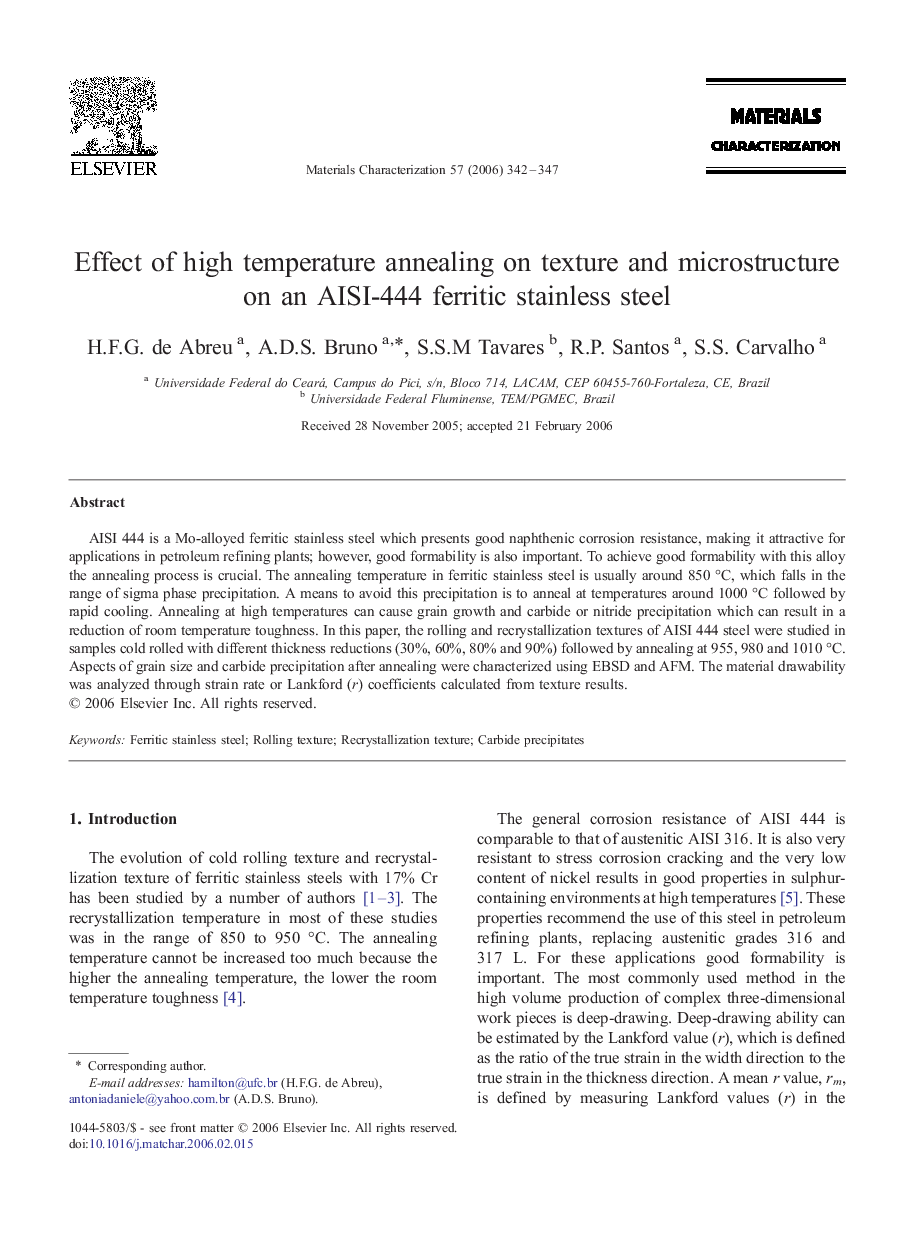| Article ID | Journal | Published Year | Pages | File Type |
|---|---|---|---|---|
| 1572815 | Materials Characterization | 2006 | 6 Pages |
AISI 444 is a Mo-alloyed ferritic stainless steel which presents good naphthenic corrosion resistance, making it attractive for applications in petroleum refining plants; however, good formability is also important. To achieve good formability with this alloy the annealing process is crucial. The annealing temperature in ferritic stainless steel is usually around 850 °C, which falls in the range of sigma phase precipitation. A means to avoid this precipitation is to anneal at temperatures around 1000 °C followed by rapid cooling. Annealing at high temperatures can cause grain growth and carbide or nitride precipitation which can result in a reduction of room temperature toughness. In this paper, the rolling and recrystallization textures of AISI 444 steel were studied in samples cold rolled with different thickness reductions (30%, 60%, 80% and 90%) followed by annealing at 955, 980 and 1010 °C. Aspects of grain size and carbide precipitation after annealing were characterized using EBSD and AFM. The material drawability was analyzed through strain rate or Lankford (r) coefficients calculated from texture results.
